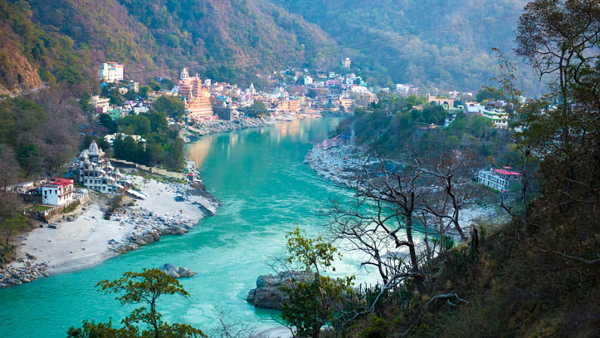Greater Noida: In order to fulfil its commitment to create additional 2.5-3 billion tonnes of carbon sink by 2030, India has developed its first catchment treatment plan for the river Ganga, a senior environment ministry official said on Thursday.
The commitment to increase additional 2.5-3 billion tonnes carbon sink was made by India in the Paris Agreement in 2015 to fight climate change.
Speaking at the 14th conference of parties (COP 14) to the United Nations Convention to Combat Desertification (UNCCD) being held at Greater Noida, Siddhanta Das, DG of Forests, Ministry of Environment, said farmers must be encouraged to grow trees outside forest areas which will help accelerate carbon sequestration process.
“The strategy to meet this goal necessitates landscape-based catchment treatment of major river systems and extending tree cover outside forests.
“The first such catchment treatment plan has been developed for the Ganges by the Forest Research Institute (FRI), and similar plans are being developed for nine major river systems by Indian Council for Forestry Research and Education (ICFRE),” Das said at a side event hosted by The Energy and Resources Institute (TERI).
Speaking about agro and farm forestry, he further said, “India’s net annual import of wood and wood-based products is Rs 42,000 crore. Encouraging farmers to grow tree outside forests can enhance incomes and accelerate the carbon sequestration process.”
To this, JV Sharma, Senior Director, TERI pointed out that agroforestry does not receive adequate attention from policymakers, even though it can potentially meet nearly two-third of India’s forestry-related NDC (Nationally Determined Contributions).
He said that “lack of good quality planting material, pricing and regulatory mechanisms are hindering the growth of agroforestry in India.”
Calling for coordination between Ministry of Environment, Forests and Climate Change and the Ministry of Agriculture, he said, “A minimum support price for agroforestry will encourage farmers to grow tree outside forests”.
Another TERI official said that forest degradation accounts for nearly 55 per cent of the total cost of land degradation in India.
“The annual costs of land degradation are higher than the total cost of restoration. Thus, it makes both business and ecological sense to restore land,” Pia Sethi, Senior Fellow, TERI said.
Stating that India would need approximately Rs 3,000 billion to restore its land by 2030, she stressed on the need for an integrative policy that looks at water, agriculture and forests together.
Speaking about India’s initiatives in agriculture, Alka Bhargava, Additional Secretary, Ministry of Agriculture said the government is keenly encouraging farmers towards the use of soil cards, micro-irrigation and crop diversification.
Emphasizing that the shift towards organic farming will be a slow and gradual process, she said, “All mechanisms including direct benefit transfer are being considered to encourage farmers towards reducing their use of fertilisers and diversifying crops.”
The panel discussion also included a case study presentation by Rajal Bansal, District Magistrate of Dhamtari, Chhattisgarh, on land restoration-related efforts under the state government’s Suraji Gaon Yojana initiative.
Speaking about his administration’s integrated efforts towards water conservation, livestock management, organic farming and backyard cultivation, Bansal said, “We have leveraged the traditional knowledge of the people of Chhattisgarh to control land degradation and enhance ecosystem services.”
The panellists agreed that the UNCCD-COP has helped to recognize the scale of land degradation challenge and its linkages to climate change.
The COP 14 will conclude on Friday with the announcement of the New Delhi Declaration, to be adopted by nearly 200 countries which are participating.
Source: FE
Image Courtesy: Trekfitadventures
You may also like
-
Trade Connect E-platform For Exports Is Single Window, Fast, Accessible And Transformational: Shri Piyush Goyal
-
Five Successful Years of Pradhan Mantri Kisan Maandhan Yojana (PM-KMY)
-
Global Study by Leading Experts : Swachh Bharat Mission Drives Significant Reductions in Infant Mortality Rates in India
-
India Graphene Engineering and Innovation Centre (IGEIC) Under the Vision of Viksit Bharat@2047 Launched
-
Government Launches Vishvasya-Blockchain Technology Stack
